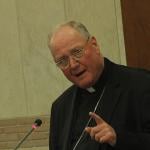Autumn Jones writes a helpful piece in The Atlantic (12/30/14) titled “The New Brand of Jesuit Universities.” Her thesis is that there is a very clear attempt at the 28 Jesuit universities in the United States to imitate Pope Francis’ attempt to rebrand themselves. She wonders, though, whether that attempt signals a conflict:
What is left at stake for both Pope Francis and Jesuit universities is whether this rebranding attenuates the authentic teaching of the Catholic Church.
She notes, somewhat infelicitously:
As a branch of Catholic education, Jesuit universities are required to fall in line with the Church as a whole and with the requests of the local bishop. Yet, similar to secular colleges and universities, they are also places where young adults are encouraged to think critically and to explore variations in religious ideology.
She notes the changing landscape of millenial religious affiliation:
There is little question that the religious landscape of Millennials—those born after 1980—is changing. According to a recent Pew Research Center study, nearly three out of every 10 Millennials don’t affiliate with a religion, one of the highest rates in the last 25 years. Another Pew study, released one year prior, found that only about a fourth of American Catholics consider themselves strongly tied to their faith. Self-reported weekly church attendance within that group dropped by more than 30 points in the last four decades, from 85 percent in 1974 to 53 percent in 2012. [NB: Pew links are not provided, but probably refer to this and this.]
The consequence, she writes, is a changing approach to the question of formation:
One of a Jesuit university’s academic objectives is to help students think critically; students may take courses in feminist theology, Christian metaphysics, Buddhism, and sex and gender. The purpose of this coursework is not to make a student think one way or another but to provide the framework from which they can make their own decisions.
She notes a 2010 document (not by name) issued by the Association of Jesuit Colleges and Universities, “Some Characteristics of Jesuit Colleges and Universities: A Self-Evaluation Instrument,” [link added], but also notes that some do not find the efforts of Jesuit universities to be sufficient to contribute to the mission of the Church:
A university is recognized as “Catholic” if it falls inline [sic] with the teachings of the Church as articulated in Pope John Paul II’s Ex Corde Ecclesiae [italics and link added] and the United States Conference of Catholic Bishop’s supplemental documents. Though Jesuit universities are listed as Catholic universities, certain advocacy groups disagree that this is the case. For example, the Cardinal Newman Society each year produces The Newman Guide to Choosing a Catholic College [link added], which outlines the schools it feels best uphold Catholic identity on campus. Rarely does a Jesuit university make the list. [NB: I believe that by “supplemental documents” she means these. See here for a recent further development.]
Commentary
In general I find language of “falling in line” unhelpful when speaking about truth. Scientists who verify data from earlier studies do not “fall in line” with other researchers; they reach the same conclusions. Similarly, universities are complex places where people of Catholic faith, other faith, or no faith seek knowledge; some people reach the same conclusions. That those conclusions are controverted makes the university an intellectually robust place.
Catholic universities today are faced with choices about whom they wish to teach and whom they wish to pay for teaching and research. A small minority of places can choose to hire strong Catholics and attract strong Catholics as students; the Newman Guide describes such places, which make an important contribution to the future of the Church and its witness in the world. Yet as Melanie M. Morey and John J. Piderit describe in their book Catholic Higher Education: A Culture in Crisis (Oxford, 2010), that model is not supportable at all two hundred-plus Catholic colleges and universities. Most will teach students of varying religious formation (and interest), and must navigate a very difficult mission of evangelization.
That mission will involve rather prosaic tasks like teaching history, math, writing, genetics, and yes, critical thinking. Hopefully it will involve inviting critical engagement with seminal texts like the Bible, and culture-shaping thinking like that of the Catholic intellectual tradition. Perhaps most importantly, though, it will involve a subtle shaping of the imagination represented with oft-used and abused terms like cura personalis (care of the person) and eloquentia perfecta (“perfect eloquence,” the ability to speak well with interlocutors). For at the heart of Jesuit education and indeed, at the heart of the Church, is a profound conviction that all authentic knowing is a participation in the logos of the universe, a logos that took flesh. As educators, we are privileged to walk with our students at a small yet formative stage of their pilgrimage. It may not be a stage that erupts into Catholic piety–though it is often beautiful when it does. Many of our students will never embrace that piety. It is therefore an altogether radical faith that enables us yet to believe that God is doing something in the life of the agnostic, the secular Buddhist, the variegated Taoist/Christian/universalist student.
I am disenchanted with the “Catholic universities are going secular like the Ivies” trope that is common in the blogosphere and in various media. I find that it often sees a changing forest and does not do the work of taking a close look at the trees, or the new life that grows from its teeming floor. At the same time, I am disenchanted with the sneering of those who believe that the Church should get out of the university, which the Church herself invented. My colleagues and I in offices of university mission at Jesuit universities (and other great Catholic universities) are interested in raising new conversations about the intersection of intellectual life and spirituality; engaging Catholic tradition and learning from other great wisdom traditions; attending to the personal, social, spiritual, and religious formation of students; inviting students, faculty, and staff into deeper prayer; and so on.
There is no template for how to do this work of evangelization. But I take heart by paying attention to the examples of Jesuits who forged new paths of conversation, discovering a Holy Spirit who broods over a bent world while at the same time developing a new cosmopolitanism, the effects of which are still unfolding today. I recall the words of Jesuit philosopher Bernard Lonergan, who discerned the difficulty of forging such a path.
Classical culture cannot be jettisoned without being replaced; and what replaces it cannot but run counter to classical expectations. There is bound to be formed a solid right that is determined to live in a world that no longer exists. There is bound to be formed a scattered left, captivated by now this, now that new development, exploring now this and now that new possibility. But what will count is a perhaps not numerous center, big enough to be at home in both the old and the new, painstaking enough to work out one by one the transitions to be made, strong enough to refuse half measures and insist on complete solutions even though it has to wait. (In Collection, ed. Frederick E. Crowe and Robert M. Doran, Collected Works of Bernard Lonergan, vol. 4 [Toronto: University of Toronto Press, 1988], 245.)
At their best, Jesuit universities are part of that “not numerous center,” where there will always be intellectual ferment which often drives one mad and yet also offers graces of consolation and insight. Yes, they must rebrand, if by that one means not simply pasting a new name on an unchanging reality, but rather discerning the signs of the times in order to minister more effectively.











